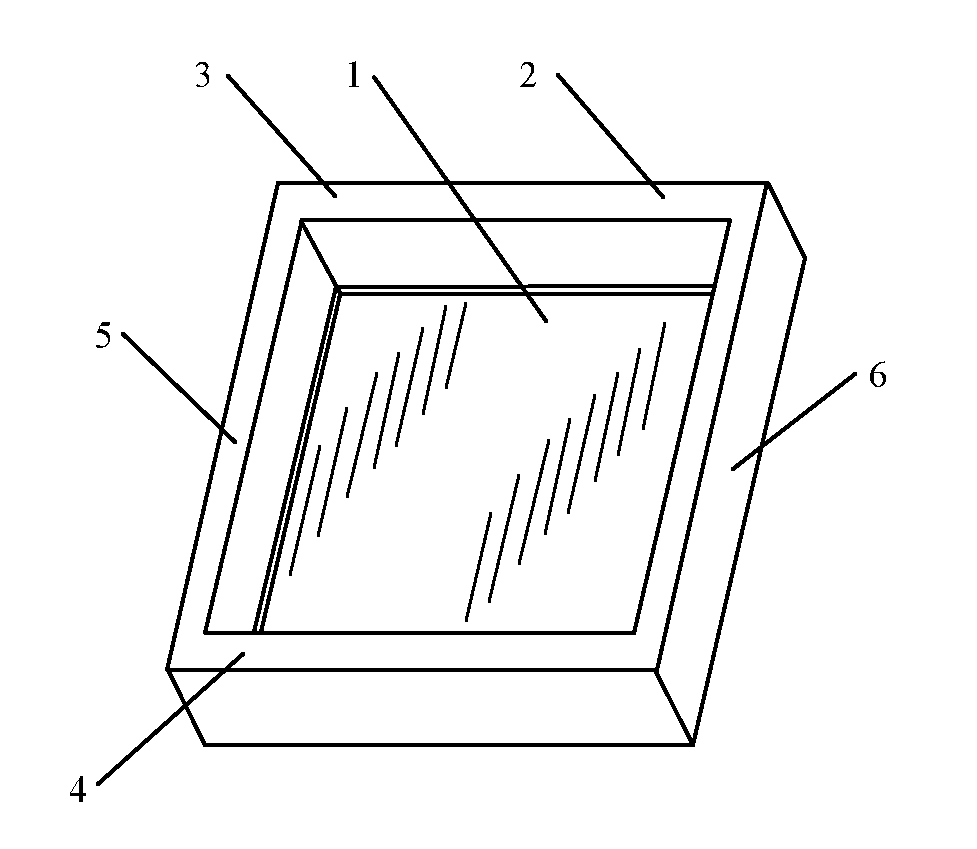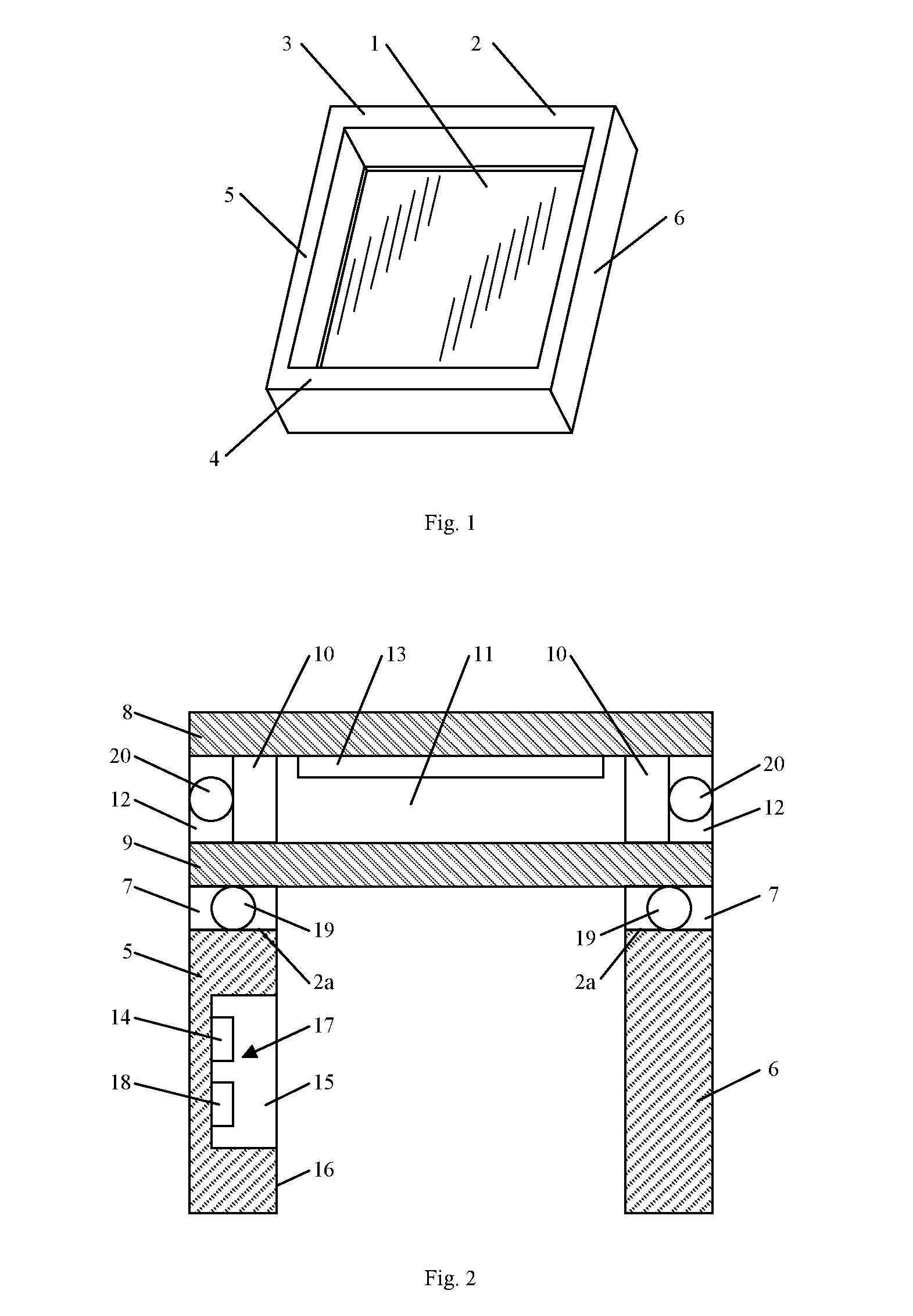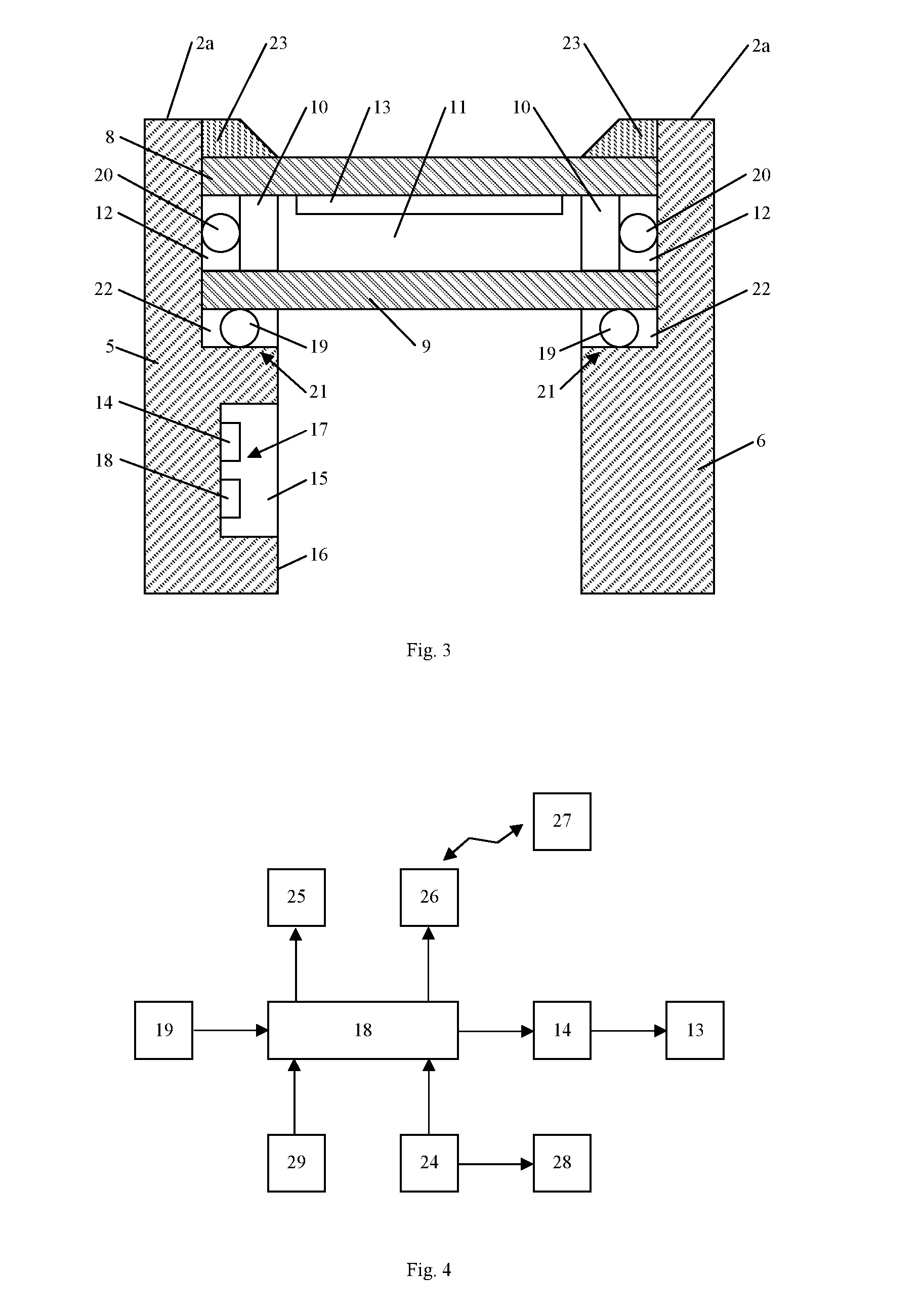Temperature-controlled window and mehtod of controlling thereof
a technology of temperature control and mehtod, which is applied in the direction of door/window protective devices, process and machine control, instruments, etc., can solve the problems of temperature variation, lcd layer activation too early or too late, and temperature measurement outside and not inside the room, etc., and achieve the effect of less cos
- Summary
- Abstract
- Description
- Claims
- Application Information
AI Technical Summary
Benefits of technology
Problems solved by technology
Method used
Image
Examples
first embodiment
[0073]FIG. 2 shows a cross-section of a first embodiment according to the invention wherein the window pane 1 is connected to an end face 2a on the window frame 2 via a joint 7. The joint 7 can be a glue joint, a rubber joint or other suitable joint configured to retain the window pane 1 in the window frame 2. In this embodiment, the window frame 2 is designed as a narrow window frame. The window pane 1 can include two, three or more glass panes 8, 9 separated by a number of spacers 10 such that the glass panes 8, 9 and the spacers 10 together form a cavity 11. The cavity 11 along the edge of the glass panes 8, 9 can be sealed by means of silicone, elastic joint filler or other suitable sealing material 12. The cavity 11 can be filled with a gas such as krypton, argon, air or other suitable gas.
[0074]A layer of light-transmitting material 13 such as electrochrome, fluid crystals (called LCD), thermochrome, window film, sunfilm, UV-film, or other suitable material can be provided at ...
second embodiment
[0079]FIG. 3 is a cross-section of a second embodiment according to the invention which differs from the cross-section in FIG. 2 in that the pane 1 is disposed in cutout 21 in the form of rabbet on the window frame 2. In this embodiment, the window frame 2 is designed as a wide window frame in which the rabbet can be formed along the inner side face 16 and the end face 2a of the window frame 2.
[0080]In this embodiment, the window pane 1 can be provided on a number of spacer blocks (not shown) in the bottom member 4, wherein along the periphery of the inner side 9a of the window pane 1 there may be provided a second joint 22 in the form of a rubber band, an elastic joint filler or other suitable joint. The window pane 1 can be retained in the rabbet 21 by means of an edge profile 23 which can be disposed at the outer side 8b of the window pane 1 and can include a joint (not shown) facing the joint 22.
[0081]FIG. 4 shows a simplified layout of the electric circuit 16 according to an em...
third embodiment
[0096]In a third embodiment, control of the window 30 can be performed by means of an application configured to run on the communication unit 32. The application can be configured to communicate with the server 31 via a wireless communication module in the communication unit 32. The application can be configured to communicate with the window 30 by means of the wireless communication module 26 in the window 30. The application can be designed to control the functions in the window 30 by means of one or more graphic user interfaces. One or more of the graphic user interfaces can be designed to visually indicate (via text or graphics) one or more of the measurements performed in the window 30, e.g. the temperatures Tm, Tr, air pressure, light index or other measurement. The user can control the functions in the window 30 by means of the application and possibly perform a change in one or more of the parameters by which the window 30 is controlled. The operating panel 25 can hereby be ...
PUM
 Login to View More
Login to View More Abstract
Description
Claims
Application Information
 Login to View More
Login to View More - R&D
- Intellectual Property
- Life Sciences
- Materials
- Tech Scout
- Unparalleled Data Quality
- Higher Quality Content
- 60% Fewer Hallucinations
Browse by: Latest US Patents, China's latest patents, Technical Efficacy Thesaurus, Application Domain, Technology Topic, Popular Technical Reports.
© 2025 PatSnap. All rights reserved.Legal|Privacy policy|Modern Slavery Act Transparency Statement|Sitemap|About US| Contact US: help@patsnap.com



